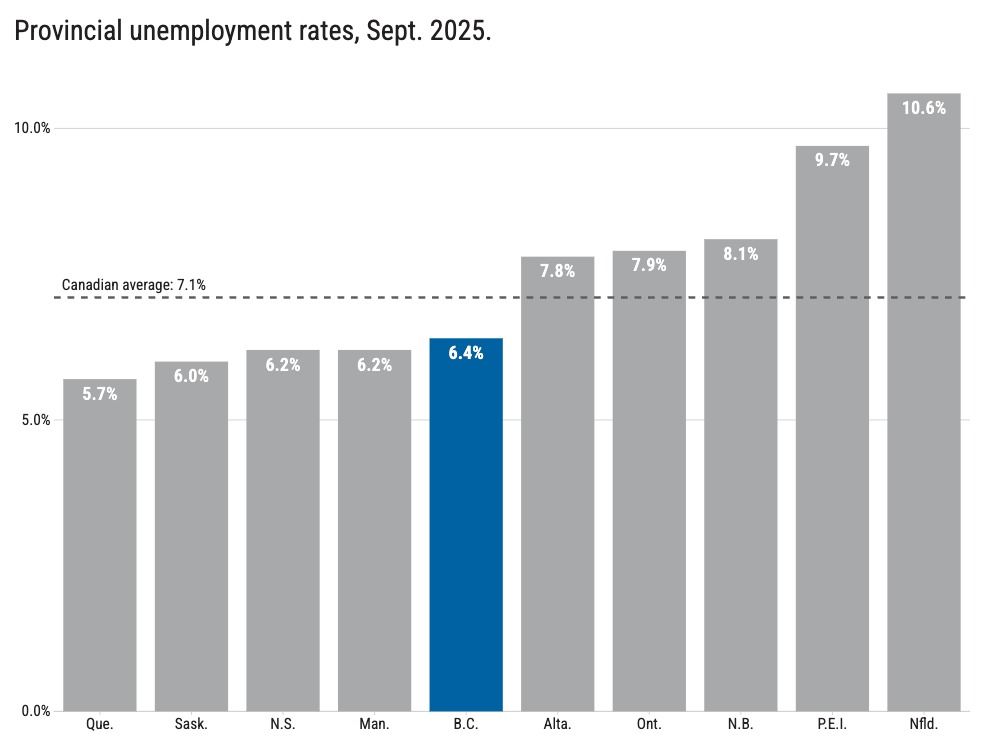
B.C.’s economy added 7,800 jobs last month, with gains coming mostly in the hospitality, education, and arts and culture sectors, according to Statistics Canada .
It was the largest increase since May but not nearly enough to offset the previous two months of job losses. The province shed 32,000 jobs in July and August.
“B.C. leads Canada in private-sector job growth and is holding steady working to build an economy that can stand on its own two feet,” Ravi Kahlon, the minister of jobs and economic growth, said in a statement. “Year over year, B.C. has seen an increase of 48,600 jobs.”
Gavin Dew, the Conservative critic for small business and innovation, countered by saying: “This government keeps trying to claim B.C.’s economy is strong. But the numbers tell a very different story, and it’s even worse when you actually talk to small-business people.”
Here’s a closer look at some key takeaways from the latest jobs report:
Big gains in hospitality, big losses in trade
The hospitality industry added 12,000 jobs in September, the most of any sector. After that was education, with nearly 11,000 new jobs.
Unsurprisingly, given U.S. tariffs, the wholesale and retail trade lost nearly 17,000 jobs, far and away the most jobs lost in any sector.
“B.C. and Canada are facing serious challenges in the face of U.S. President Donald Trump’s attacks on our economy and sovereignty. Tariffs and economic uncertainty are large challenges for certain sectors and regions throughout the province,” Kahlon said.
Unemployment rate ticks back up
Despite the modest increase in jobs, the unemployment rate ticked back up to 6.4 per cent, the same rate as in May. September and May’s rates were tied as the highest rate of unemployment since January 2022.
The unemployment rate in the province has grown fairly steadily since its recent low of 4.2 per cent in December 2022.
Unemployment rate is below national average
Kahlon, however, said the unemployment rate remains below the national average of 7.1 per cent, adding: “B.C. continues to lead the country with an average hourly wage of $37.94, the second highest among provinces.”
B.C.’s unemployment rate was lower than the rate in Alberta and Ontario but higher than Quebec’s. Newfoundland and Labrador leads the country in unemployment, with a rate of 10.6 per cent.
Youth unemployment stubbornly high
There are significant differences in unemployment among different age groups. Nearly six per cent of core-age workers, defined as being between 25 and 54, were unemployed in September, nearly two percentage points higher than in January 2022.
And youth unemployment remains stubbornly high. Among British Columbians aged 15-24, 13.7 per cent were unemployed — the second highest level since January 2022. Youth unemployment has grown steadily since January of 2024.
“What continues to worry me is the lack of opportunities for young people,” Dew said.